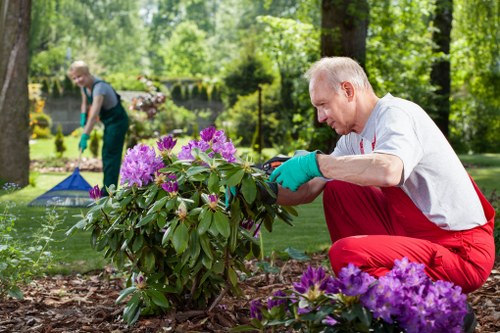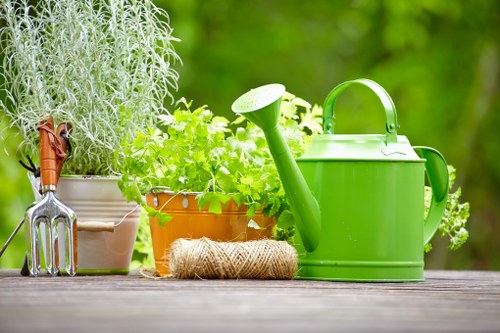Pressure Cleaning Temple: A Comprehensive Guide to Maintaining Your Sanctuary

Maintaining the beauty and integrity of your temple is essential for both aesthetic and structural reasons. One of the most effective ways to achieve this is through professional pressure cleaning. Pressure cleaning, also known as pressure washing, uses high-pressure water spray to remove dirt, grime, mold, and other unwanted substances from various surfaces. In the context of temples, this method ensures that the sacred space remains pristine and welcoming for all visitors.
Temples, being places of worship and community gatherings, are subject to various environmental factors that can cause wear and tear over time. From pollution and acid rain to foot traffic and weather conditions, these elements can lead to the accumulation of unsightly stains and potentially harmful substances. Regular pressure cleaning helps mitigate these issues, preserving the temple's appearance and extending the lifespan of its structural components.
Moreover, maintaining a clean temple is not just about aesthetics. It reflects the respect and reverence that the community holds for their place of worship. A well-maintained temple provides a serene and inviting atmosphere, enhancing the spiritual experience for worshippers and visitors alike.

Benefits of Pressure Cleaning for Temples
Pressure cleaning offers numerous benefits, especially for temples that often feature intricate architectural details and expansive surfaces. Here are some of the key advantages:
- Enhanced Curb Appeal: Regular cleaning keeps the temple looking its best, making a positive impression on visitors.
- Preventative Maintenance: Removing harmful substances early prevents long-term damage to structures and surfaces.
- Health and Safety: Eliminating mold, mildew, and other allergens creates a healthier environment for worshippers.
- Cost-Effective: Regular maintenance reduces the need for expensive repairs in the future.
- Environmental Benefits: Pressure cleaning can be performed using eco-friendly detergents, minimizing environmental impact.
These benefits collectively contribute to the preservation of the temple's historical and cultural significance, ensuring it remains a cherished landmark for generations to come.
Additionally, pressure cleaning can be tailored to address the specific needs of different areas within the temple complex, ensuring comprehensive maintenance.

Key Areas to Focus on During Pressure Cleaning
When undertaking pressure cleaning in a temple, it is crucial to identify and prioritize the key areas that require attention. These typically include:
- Exterior Walls: Removing dirt, moss, and algae to restore the building's facade.
- Roof Tiles: Cleaning debris and preventing water damage.
- Walkways and Floors: Ensuring safe and clean paths for visitors.
- Entrances and Doorways: Maintaining pristine entry points.
- Windows and Stained Glass: Cleaning delicate surfaces without causing damage.
Each of these areas requires specific techniques and equipment to ensure effective cleaning without compromising the temple's structural integrity.
For instance, high-pressure washing is suitable for robust surfaces like stone walls, while low-pressure methods are preferable for delicate stained glass windows to avoid damage.

Choosing the Right Pressure Cleaning Services
Selecting a professional pressure cleaning service is vital to achieving the best results. Here are some factors to consider:
- Experience: Look for companies with a proven track record in cleaning religious or historical buildings.
- Equipment: Ensure they use state-of-the-art pressure cleaning equipment suitable for different surfaces.
- Eco-Friendly Solutions: Opt for services that use environmentally safe detergents and water recycling systems.
- Insurance and Certification: Verify that the company is fully insured and certified to prevent any liability issues.
- References: Ask for testimonials or references from other temples or religious institutions they have served.
By carefully evaluating these aspects, you can ensure that the pressure cleaning service you choose will effectively maintain your temple without causing unintended harm.

Step-by-Step Pressure Cleaning Process
Understanding the pressure cleaning process can help you better coordinate with service providers and ensure all aspects of maintenance are covered. Here is a typical step-by-step process:
- Inspection: A thorough assessment of the temple's surfaces to determine the cleaning needs and identify any potential issues.
- Preparation: Clearing the area of any movable objects, covering sensitive areas, and applying eco-friendly detergents where necessary.
- Pre-Wetting: Applying water to loosen dirt and grime, making it easier to remove during the cleaning process.
- Pressure Washing: Using the appropriate pressure settings to clean the surfaces effectively without causing damage.
- Rinsing: Ensuring all detergents and loosened debris are thoroughly washed away.
- Drying and Inspection: Allowing the surfaces to dry and conducting a final inspection to ensure the cleaning was successful.
This systematic approach ensures that the pressure cleaning is comprehensive and leaves the temple looking immaculate.
Additionally, regular maintenance following this process can help prevent the buildup of harmful substances and maintain the temple's structural integrity over time.

Local Areas Near Temple for Pressure Cleaning Services
Temple is surrounded by several areas that also benefit from professional pressure cleaning services. These nearby areas include:
- Georgetown: Located just 5 miles from Temple, Georgetown features historic buildings that require regular maintenance.
- Sunnyvale: A bustling community 8 miles away, Sunnyvale has numerous temples and community centers needing pressure cleaning.
- Laketown: 10 miles from Temple, Laketown's proximity to waterways means frequent cleaning to prevent mold and mildew.
- Riverside: Situated 12 miles away, Riverside's humid climate necessitates regular pressure cleaning to maintain structures.
- Pinehurst: Just 7 miles from Temple, Pinehurst's traditional architecture benefits greatly from professional cleaning services.
- Oakwood: 9 miles out, Oakwood has several historical sites that require meticulous pressure cleaning.
- Maple Grove: Located 11 miles away, Maple Grove's communal temples need regular upkeep to preserve their beauty.
- Brookside: 6 miles from Temple, Brookside experiences heavy foot traffic in temples, making regular cleaning essential.
- Willow Creek: 14 miles away, Willow Creek's older temples benefit from pressure cleaning to prevent structural degradation.
- Fairview: 13 miles from Temple, Fairview has a vibrant religious community that relies on clean and safe worship spaces.
Each of these areas has unique features and challenges that pressure cleaning services can address, ensuring that temples and other communal buildings remain inviting and well-maintained.
By extending services to these neighboring regions, pressure cleaning professionals help preserve the cultural and historical heritage of the entire community.
Environmental Considerations in Pressure Cleaning
While pressure cleaning is highly effective, it is essential to consider its environmental impact. Sustainable practices ensure that the cleaning process does not harm the surrounding ecosystem.
- Eco-Friendly Detergents: Using biodegradable and non-toxic cleaning agents minimizes environmental contamination.
- Water Conservation: Implementing water recycling systems reduces water usage and waste.
- Proper Waste Disposal: Ensuring that runoff water containing contaminants is treated before being released into the environment.
- Energy-Efficient Equipment: Utilizing machinery that consumes less energy contributes to overall sustainability.
Adhering to these practices not only protects the environment but also aligns with the ethical and spiritual values often upheld by temple communities.
Moreover, environmentally conscious pressure cleaning demonstrates a commitment to stewardship of both the sacred space and the surrounding natural world.
Choosing the Right Frequency for Pressure Cleaning
The frequency of pressure cleaning depends on several factors, including the temple's location, weather conditions, and the materials used in construction. Generally, the following guidelines can be applied:
- Annual Cleaning: Suitable for temples in areas with minimal pollution and moderate weather conditions.
- Biannual Cleaning: Recommended for temples exposed to higher levels of pollutants, heavy foot traffic, or harsh weather.
- Quarterly Cleaning: Necessary for temples in urban areas with significant pollution or in locations prone to mold and mildew growth.
Regular inspections can help determine the optimal cleaning schedule, ensuring that the temple remains in excellent condition without unnecessary procedures.
Additionally, special events or seasonal changes may necessitate more frequent cleanings to maintain the temple's appearance and structural integrity.
Costs Associated with Pressure Cleaning Temples
The cost of pressure cleaning a temple varies based on factors such as the size of the building, the extent of cleaning required, and the specific services chosen. Here are some typical cost considerations:
- Size of the Temple: Larger structures require more time and resources, increasing the overall cost.
- Surface Types: Different materials may require specialized equipment or detergents, affecting the price.
- Frequency of Cleaning: Regular contracts may offer discounted rates compared to one-time services.
- Additional Services: Tasks like window cleaning or minor repairs can add to the total cost.
- Location: Proximity to the service provider can influence pricing, with remote areas potentially incurring higher fees.
On average, pressure cleaning services for temples can range from $300 to $2000, depending on the aforementioned factors. It's advisable to obtain multiple quotes and compare services to ensure you receive the best value.
Investing in quality pressure cleaning services is a long-term investment in the preservation and upkeep of your temple, ensuring it remains a beacon of community and spirituality.
Maintaining Post-Cleaning Results
After a thorough pressure cleaning, maintaining the temple's cleanliness is essential for lasting results. Here are some tips:
- Regular Inspections: Periodically check key areas for signs of dirt or damage.
- Immediate Spot Cleaning: Address any spills or stains promptly to prevent buildup.
- Protective Coatings: Applying sealants can help repel water and prevent future stains.
- Landscaping Maintenance: Keeping the surrounding area free from debris reduces the likelihood of surface contamination.
- Educate the Community: Encourage temple members to maintain cleanliness and report any issues promptly.
By implementing these maintenance practices, you can extend the benefits of pressure cleaning and ensure that the temple remains a clean and inviting space for all.
Consistent upkeep not only preserves the temple's appearance but also contributes to its structural longevity, safeguarding it for future generations.
Conclusion
Pressure cleaning is an invaluable service for temples, offering a combination of aesthetic enhancement and structural preservation. By understanding the benefits, key areas for cleaning, and best practices, temple administrators can ensure their sacred spaces remain beautiful and functional.
Choosing the right pressure cleaning service, considering environmental factors, and maintaining regular cleaning schedules are crucial steps in this process. Additionally, extending these services to nearby areas like Georgetown, Sunnyvale, and Laketown helps preserve the broader community's cultural and historical landmarks.
Investing in professional pressure cleaning not only enhances the temple's appearance but also upholds its role as a respected and cherished place of worship.
Frequently Asked Questions
1. How often should a temple undergo pressure cleaning?
The frequency depends on factors like location, weather, and usage. Generally, an annual or biannual cleaning is recommended, but temples in high-pollution areas may require quarterly cleanings.
2. Is pressure cleaning safe for all types of temple materials?
Yes, when performed by professionals who adjust the pressure settings according to the material. Delicate surfaces like stained glass require lower pressure to prevent damage.
3. What eco-friendly cleaning agents are used in pressure cleaning?
Biodegradable detergents and non-toxic cleaners are commonly used to minimize environmental impact while effectively removing dirt and grime.
4. Can pressure cleaning help prevent structural damage?
Absolutely. Regular pressure cleaning removes harmful substances that can degrade materials over time, thereby preventing costly structural repairs.
5. How do I choose a reliable pressure cleaning service for my temple?
Look for companies with experience in cleaning religious or historical buildings, check their references, ensure they use eco-friendly practices, and verify their insurance and certifications.


